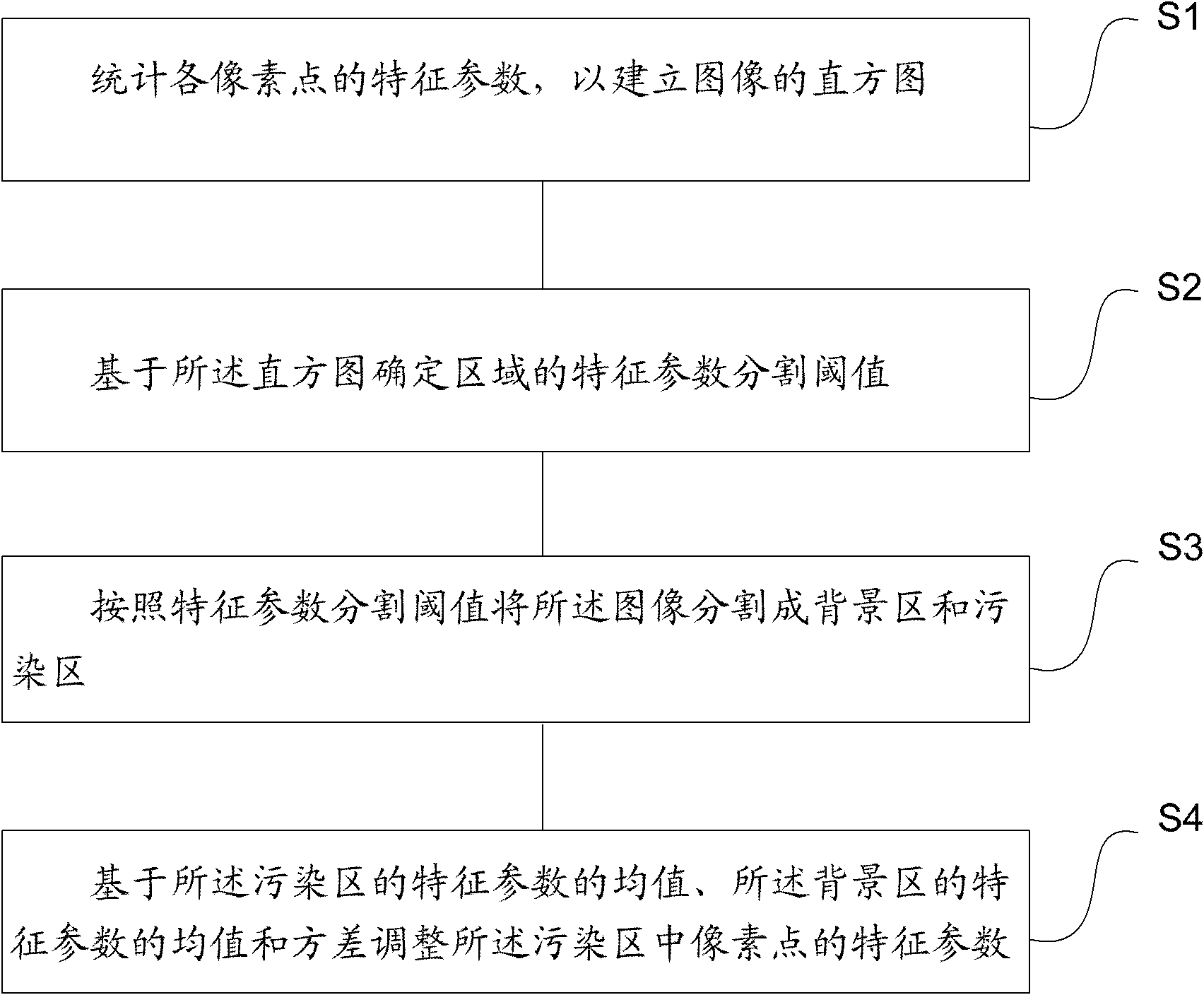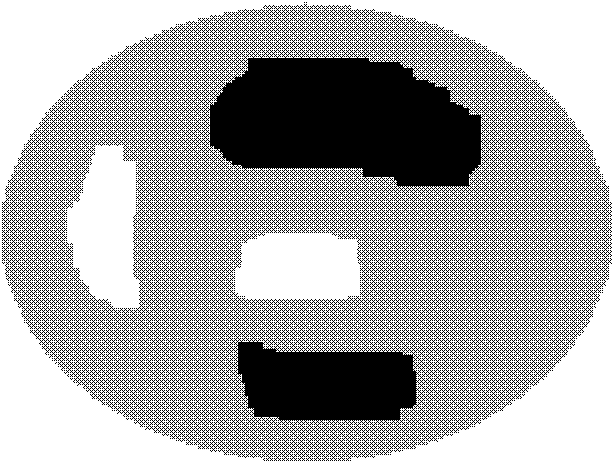Terminal and method and device for repairing image
A repair method and image technology, applied in the field of image processing, can solve the problems of large amount of calculation and poor repair effect of digital images, achieve strong self-adaptive ability, achieve simple and fast, and ensure overall consistency
- Summary
- Abstract
- Description
- Claims
- Application Information
AI Technical Summary
Problems solved by technology
Method used
Image
Examples
Embodiment 1
[0046] In this embodiment, a grayscale image is taken as an example for illustration, please refer to figure 2 , figure 2 It is a schematic diagram of an example of an image area to be repaired in a specific embodiment of an image repair method of the present invention. The gray area as the background area accounts for the main part, and the black and white areas represent the contaminated parts. When repairing the image area, its gray level needs to be adjusted to be nearly consistent with the background area, so that the entire area looks homogeneous. It should be noted figure 2 It is just a hint. The actual gray and white levels will change within a certain range, and the transition between them is not very obvious, but the overall performance is still that the background is in the majority, and the polluted ones are a few, and the ones distributed in the background area are brighter or brighter. dark extremes.
[0047] Step S1: First, count the grayscale distribution...
Embodiment 2
[0063] In this embodiment, a color image is taken as an example for illustration. Since human eyes are not as sensitive to the brightness of an area color, this embodiment only adjusts the polluted area of the image according to the statistical data of the brightness component.
[0064] Step S1: First, count the luminance components of each pixel in the entire area including the polluted area, and establish a luminance histogram of the color image.
[0065] Step S2: According to the statistics of the densest background area in the brightness histogram, the brightness segmentation threshold of the polluted area can be determined. In this embodiment, the brightness segmentation threshold may include an upper limit of brightness segmentation and a lower limit of brightness segmentation.
[0066]Step S3: Segment the color image into a background area and a pollution area according to the brightness segmentation threshold. According to the brightness segmentation upper limit and...
Embodiment 3
[0081] In this embodiment, a color image in YUV color space is taken as an example for illustration. In this embodiment, not only according to the brightness component, but also according to the statistical data of the chrominance component, the pollution area of the image is adjusted.
[0082] In the YUV color space, the luminance component Y and the chrominance components U, V are separated. If there is only the Y component but no U and V components, then the image represented in this way is a black and white grayscale image. For example, if color TV adopts YUV space, the brightness component Y can be used to solve the compatibility problem between color TV and black and white TV, so that black and white TV can also receive color signals.
[0083] The restoration method of the luminance component Y in the color image in this embodiment is the same as that described in Embodiment 2, and will not be repeated here. The chrominance components U and V can be adjusted according...
PUM
 Login to View More
Login to View More Abstract
Description
Claims
Application Information
 Login to View More
Login to View More - R&D
- Intellectual Property
- Life Sciences
- Materials
- Tech Scout
- Unparalleled Data Quality
- Higher Quality Content
- 60% Fewer Hallucinations
Browse by: Latest US Patents, China's latest patents, Technical Efficacy Thesaurus, Application Domain, Technology Topic, Popular Technical Reports.
© 2025 PatSnap. All rights reserved.Legal|Privacy policy|Modern Slavery Act Transparency Statement|Sitemap|About US| Contact US: help@patsnap.com



